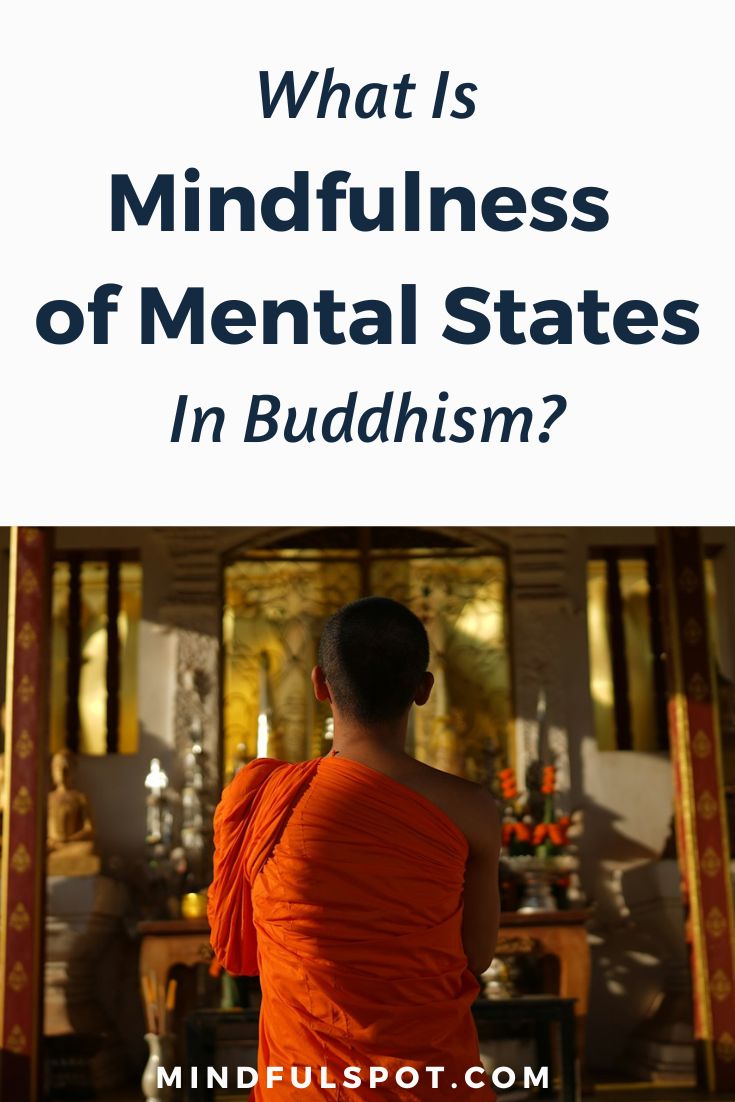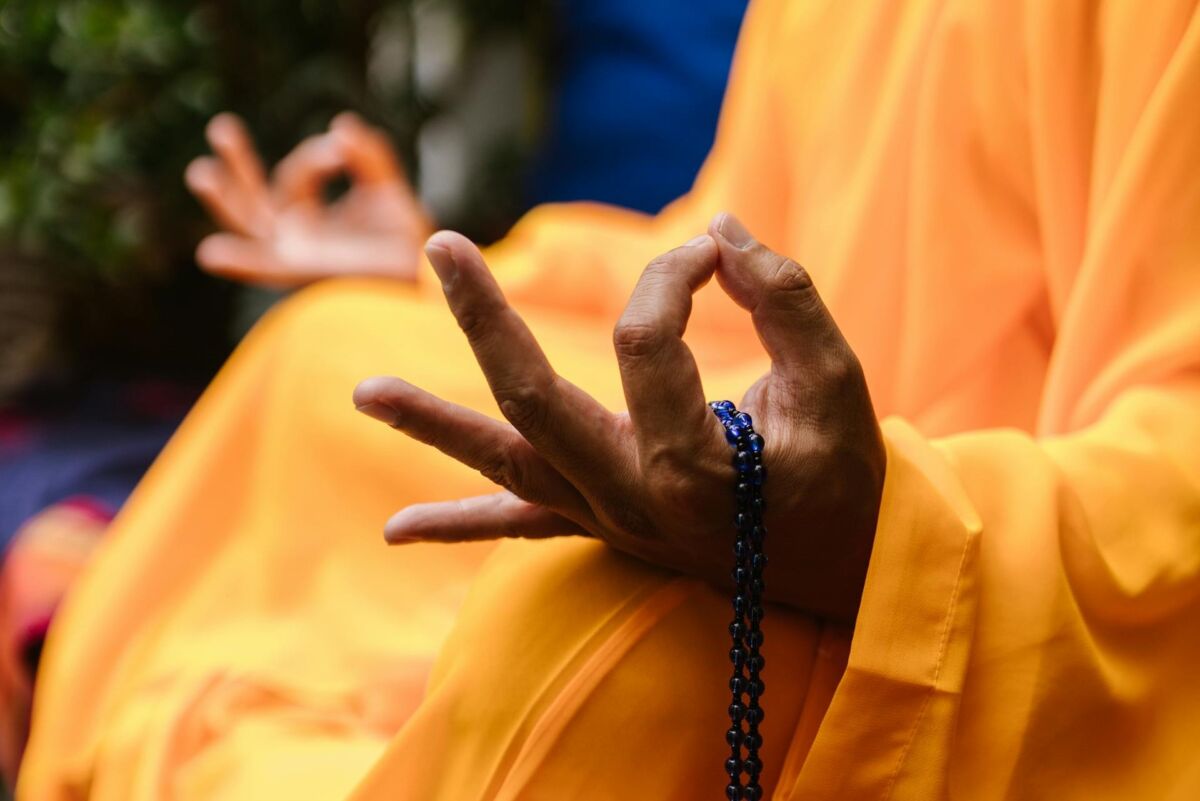Mindfulness of mental states allows you to conduct a continuous inward monitoring by asking, “How is the mind?”
From this perspective, outside events — where all our attention usually goes — become secondary. What really matters is your mind’s reaction to them.
Developing this awareness is the main task of this mental exercise, which is primarily focused on lust, anger, and delusion. When you clearly recognize them in yourself, it becomes easier to recognize them in others and respond skillfully to unconscious behavior. Here’s how this practice is described in an ancient scripture, included in Satipatthana Meditation: A Practice Guide by Bhikkhu Analayo:
One knows a mind with lust to be “a mind with lust;” or one knows a mind without lust to be “a mind without lust;” or one know a mind with anger to be “a mind with anger;” or one knows a mind without anger to be “a mind without anger;” or one knows a mind with delusion to be “a mind with delusion;” or one know a mind without delusion to be “a mind without a delusion.”
Analayo continues by rephrasing this passage into a simpler language:

FREE Self-Test: How Spiritual Are You?
Just as we ask others: “How are you?” so we now keep asking ourselves: “How is the mind?” Expressed in terms of the three categories of contemplation of the mind mentioned above: “how is the mind, is it with lust or without lust, with anger or without anger, with delusion or without delusion?”
Then he adds:
Whenever a distraction occurs, it could either involve some form of desire or lust, or else be related to the presence of some degree of aversion or anger. The third alternative is when the mind is just ambling around, a condition of distraction … [that] can be considered a manifestation of delusion.
Analayo explains how the present contemplation is related to the mindfulness of feelings:
The employment of these three categories helps to build a bridge from the preceding contemplation of feelings …. When lust is present in the mind, chances are that it comes accompanied by pleasant feelings. Similarly, when anger arises, chances are that such arising is accompanied by painful feelings. When delusion arises in turn, chances are that neutral feelings are present in the mind.
Working with this relationship can offer considerable support for recognizing the arising of these detrimental states of mind:
[Mindfulness of mental states has a task] to see through a particular train of thought and its related associations in order to discern the underlying mental current. For mindful recognition of our present mental state, the requirement is above all a clear recognition without getting involved in the details of whatever train of thought and related associations are taking place. …
Recognizing the feeling tone of our current experience offers help for this task. It grounds awareness in the affective reality of the present moment and thereby draws attention to our subjective involvement in whatever is happening. In this way, we learn to attend to the baseline condition of the mind rather than to the details of particular thoughts.
Analayo concludes by noting that the “absence of lust, anger, and delusion is as much a matter to be known as their presence. In this way, what is absent becomes a presence through attending to its absence:”
The task of mindfulness is not only to draw attention to the presence of a defilement. It similarly involves giving attention to the absence of a defilement. We can savor the condition of the mind at such times, get a feel for its texture, and familiarize ourselves with it.
We can experience for ourselves how much more pleasant such a condition is when compared to a defiled state of mind. Familiarizing ourselves with the difference between the presence and the absence of a defilement in terms of the texture and flavour of the mind will make it intuitively clear why the latter is preferable to the former.
How to Practice Mindfulness of Mental States (Guided Meditation)
Use this guided meditation narrated by Bhikkhu Analayo, courtesy of Windhorse Publications:
In Buddhism, mindfulness of mental states is a part of Satipatthana Meditation that leads to Nirvana and is preceded by mindfulness of feelings, mindfulness of death, mindfulness of the four elements, mindfulness of anatomical parts, mindfulness of bodily activities, and mindfulness of bodily postures. Complement with our article on how to practice lovingkindness meditation.
About the book’s author: Ven. Bhikkhu Analayo was born in 1962 in Germany, was ordained in 1995 in Sri Lanka, and completed his PhD on satipatthana at the University of Peradeniya in 2000. At present, he is mainly engaged in the practice of meditation, and among other things contributes to the Encyclopaedia of Buddhism. He has authored several books on Buddhist practice, including Satipatthana and Compassion and Emptiness in Early Buddhist Meditation.
Editor’s note: This article was updated with guided meditation by Bhikkhu Analayo.

FREE mindfulness resources for stress relief
I’m a freelance writer and mindfulness advocate behind this blog. I started my meditation practice in 2014, and in 2017 I launched this website to share what I learn with others. Here are the three things you can do here:
1. Schedule a free consult if you want to learn Buddhist meditation.
2. Download free mindfulness resources for stress relief
3. Join Patreon for exclusive content and community meetings.









